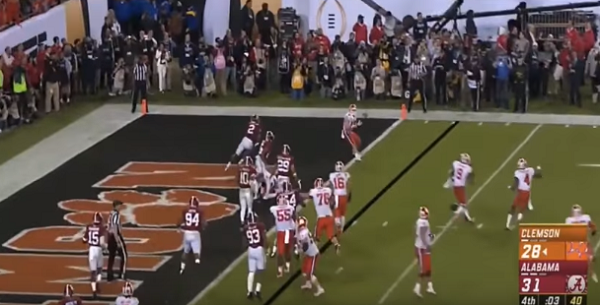
As the population on the burgeoning stage of NCAA FBS football swells to nearly 130 teams representing 44 states, the lucrative brand generating billions of dollars through foundational ties in middle American and the deep South bordering on cult status faces the realities of convolution and diminished revenue prompted by collusion and the absence of parity and relevance for teams in minor conferences.
The demonstrative formula of traditional powerhouses funded by television revenue and booster money exists as the antithesis to intrigue as the BCS and now the abbreviated playoff system is a revolving door of household names and traditions. While 85% of fan bases grip tightly onto the minute vein of hope that their team will pierce the bounds of football lore and enjoy a breakthrough on a national scale, the reality of a top heavy system plays into the hands of the television networks and digital sporting portals, as the New York Yankees and the Los Angeles Dodgers fit snugly into the favorite pair of bluejeans that is the major league baseball revenue model.
Last year, Penn State opened up the door for a secondary option, the Washington Huskies, as the network executives cringed at the idea of millions of dollars held prisoner in banks throughout the country, as the behemoths of Oklahoma and Michigan and legions of fans from coast to coast, were frozen out from the final four. The East coast bias was on full display, as the countless statistical experts on message boards to the big leagues of mainstream media, took the bait of the television universe and argued every which way, with the gusto of the leftists still protesting the presidential election, that Washington with a 12-1 record and as the Pac-12 champs, was not worthy of a championship caliber opportunity.
This year, as the hangover of another Alabama-less national championship campaign has thankfully dissipated into the late Summer anticipation of a fresh start and 5 Redbull and vodka drinks, the Associated Press released their Top-25 poll, which includes the usual disclaimer of sports media understanding that the brand names are always relevant, in spite of performance on the field.
The AP Top 25
1 Alabama(52) 0-0 1513
2 Ohio State(3) 0-0 1414
3 Florida State(4)0-0 1396
4 USC(2) 0-0 1325
5 Clemson 0-0 1201
6 Penn State 0-0 1196
7 Oklahoma 0-0 1170
8 Washington 0-0 1150
9 Wisconsin 0-0 926
10 Oklahoma State 0-0 889
11 Michigan 0-0 881
12 Auburn 0-0 880
13 LSU 0-0 784
14 Stanford 0-0 695
15 Georgia 0-0 690
16 Louisville 0-0 629
17 Florida 0-0 624
18 Miami 0-0 492
19 South Florida 0-0 327
20 Kansas State 0-0 317
21 Virginia Tech 0-0 240
22 West Virginia 0-0 207
23 Texas 0-0 173
24 Washington State0-0 133
25 Tennessee 0-0 114
On par with the ultimate voters of the fans, only eight of the top teams hail from the West of the Mississippi River, including only three outside of the football metroplex of Texas and Oklahoma. Why Texas is ranked after two years of suitably mediocre work is not based on merit, but by the the propensity of voters to go with a historically known quantity. While the preseason rankings have zero weight in what actually happens on the field, the axiom holds true that it is difficult for a highly ranked to fall out of graces, while a virtually obscure team from a non-power five conference has to literally battle to register on the radar screen of the gridiron landscape.
As the brass at the NCAA headquarters salivates with the promise of an Alabama versus Ohio State championship match-up, the television networks and minions of writers only hope that nothing out of the ordinary happens to throw a monkey wrench into the beauty of contrived symmetry, the perfect model for generation a wealth of revenue. Thankfully, upsets happen and the results on the field are still unpredictable, even with the plethora of statistics and resources in evaluating teams and individual players.